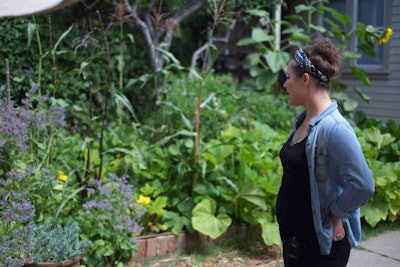 Photo: Nicolás Boullosa/Flickr
Photo: Nicolás Boullosa/FlickrBrett Stephens and Casey Allen hail from different parts of the country, but they share a love of San Francisco, California, and its native flora and fauna. Stephens, originally from Houston, Texas, moved to the Bay Area in 1995 and studied environmental horticulture at City College of San Francisco. That’s where he met Allen, a San Francisco native studying horticulture.
Allen grew up planting and gardening with his mother and godmother. “I got the chance to do new things and make mistakes; it made me think I was on an even playing field with adults and taught me how my actions affect the planet,” he says. “I realized I like landscaping: I was good at it, and it’s a healthy lifestyle.” Allen, as well as most of the staff, continues this healthy, eco-friendly mission by biking to jobsites daily.
For Stephens, two loves led him to his career: art and nature. The two combined when he began designing landscapes in college. As he took on more projects in community gardens and native spaces throughout the city, he realized his true calling.
After graduation, the two kept in touch but cut their own paths in the local landscaping industry. Allen managed his own maintenance company for a few years, and worked with the San Francisco Parks and Recreation Department to earn certifications in natural gardening and composting. Stephens worked in the nursery industry and with landscape contractors, in addition to managing his part-time business, The Garden Artist.
“A couple of years ago, Casey and I decided to partner in San Francisco Landscapes,” Stephens says. The company’s portfolio of services includes design/build and plant installations, as well as maintenance, with an emphasis on permaculture.
In sync with Mother Nature
Based on a holistic approach to landscape design, permaculture seeks to accentuate natural systems in the landscape to benefit both nature and humans. Stephens says a good permaculture design has very few inputs and high yields. A landscape design using all natural materials, including fruit-bearing trees, is a typical example of the permaculture requests San Francisco Landscapes receives.
Permaculture in name only may not mean much to most, but Stephens and Allen take time to explain the benefits of the practice. They first interview new clients to find out their needs. “Ideally, we use endemic/native plants from this area in all projects,” Stephens says. “Fruit trees or perennial veggies, along with some type of water feature, attract pollinators and good insects. Recycled materials and natural stone highlight a lot of our projects.” As in other larger cities, most homes in San Francisco have small front and backyards, so it’s important to design efficiently to fit all aspects of what a homeowner wants. “People just have their little oasis, and they try to find ways to enjoy it,” Stephens explains.
“We are the middlemen between the people who want a garden, but don’t have time to do it,” Allen says.
At the office (also Stephens’ residence) recycled water is used to create a habitat in the backyard. “Water is precious here [in California], and this is beneficial for insects and birds without the energy costs of transporting water and oil,” Stephens explains.
Stephens says an increasing number of people inquire about greywater. Greywater, wash water from kitchen and bathroom sinks, as well as bathtubs that has gone through an extensive cleaning and filtering process, can be used for irrigation purposes. It’s important to know the effects of unclean water on a landscape, so learning techniques from a greywater expert is essential.
Sustainability is key
San Francisco Landscapes’ customers fall in the middle-range income bracket for the area, and Allen says he typically uses a few eco-friendly terms when meeting a new customer to gauge reception. “I’ll say, ‘We like to compost,’ or ‘We like to use native plants’ and see how they react. If it’s positive, we’re good to go.”
Stephens says the buzz regarding native plants has a lot to do with people becoming more earth-friendly and conscious of their actions. In addition, buying and harvesting plants locally helps eliminate the introduction of foreign pests into the U.S. landscape. “We don’t buy rare, exotic plants from overseas because foreign pests can be devastating,” Stephens explains.
Allen says the company is moving more toward organic pest remedies. “Our philosophy is: If people have pest problems, the affected plant is wrong for the area and needs to be removed.”
Xeriscaping is gaining popularity in northern California, and San Francisco Landscapes has removed several lawns and converted them into native gardens. They use a process called sheet mulching where they take out the existing sod and put down a layer of biodegradable cardboard weed barrier that lasts about a year. On top of that goes three to four inches of mulch, and they continue to add mulch each year. Less water and light reaching the soil translates to fewer weeds.
Stephens says permeable pavers have been popular in the San Francisco area for a few years, and are preferred over poured concrete. The company includes stonework in most of their projects, either at the request of the customer or because it fits the design style. In addition, he sometimes incorporates artwork/carvings of his own.
“In my experience, a lot of people don’t know what they want or what can be done in their space,” Stephens says. “It’s my job to bring that out and show them what is possible.”







